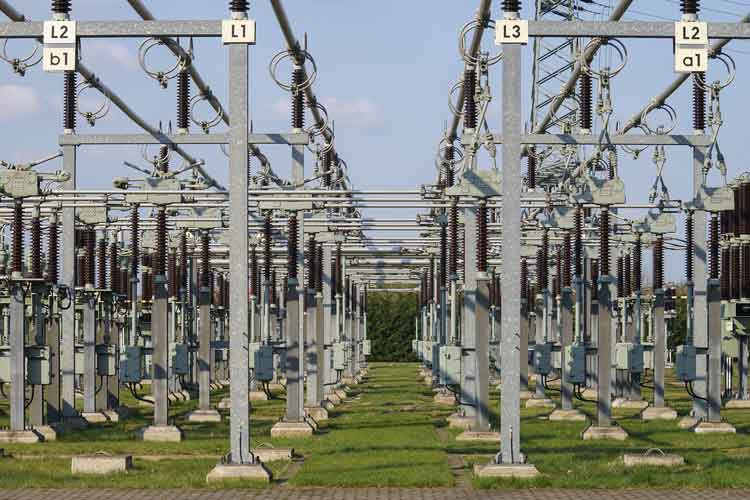LIPA keeps ratepayers in the dark over spending
LIPA and its contractors have portrayed the projects as efficient money savers necessitated by a predicted need for energy on Long Island. But recently, demand for power from consumers and businesses has fallen.
The true costs associated with the projects, which will saddle ratepayers with $6 billion in costs over the next 20 years have never been publicly disclosed by LIPA and the contractors.
Among revelations in the records: LIPA's closely guarded 20-year contract for the Caithness power plant in Yaphank is valued at $1.49 billion, or around $74 million a year; two contracts tied to the Neptune Cable are valued at another $2.7 billion; and a 15-year contract inked in 2006 for a hydro-energy plant called Bear Swamp in Massachusetts has a $924-million price tag.
In most cases, the contracts are for availability of the plants, and not the day-to-day costs to buy the actual energy.
LIPA chief Kevin Law, through a spokesman, did not dispute the numbers and added they were based on a combination of "fixed and variable costs" that could fluctuate over time.
Spokesman Ed Dumas said the endeavors were vital to LIPA to "give customers access to cleaner sources of energy and meet capacity needs and requirements placed on LIPA by regulators."
Proponents note that the newer energy sources provide cleaner energy compared with antiquated KeySpan/National Grid plants.
Richard Kessel, a former LIPA chairman of the board of trustees and former chief executive, staunchly defended the authority's past decisions on new energy contracts, despite the costs.
"It certainly sounds like a lot of money but you have to keep the lights on and the cost of purchasing power is not cheap. If anyone can find a cheaper way to do it, go ahead."
Even with decreases in energy usage, Kessel, who is now chief of the New York Power Authority, said it's imperative to plan for the future. "If anyone wants to say, 'We had a slow year because of the economy and we shouldn't have built this or that,' you'll be doing it in the dark before long. If you don't build resources then the lights don't stay on."
In part because of a ratepayer revolt over LIPA bill increases - a 5 percent bill increase is planned for next year - Law last month ordered staff to review all energy contracts to see if any could be altered or eliminated.
The records, most of which LIPA has declined to provide because of confidentiality agreements with the contracted companies, were posted on a Web site launched last summer by state Comptroller Thomas DiNapoli called OpenBookNewYork.com.
One contract under scrutiny is a pact with FPL Energy in Marcus Hook, Pa. The cost of $913.9 million over 20 years is for "capacity" that LIPA can only access in emergencies. LIPA has said it needs the excess capacity to meet regulatory requirements above peak usage. Costs for the projects, which LIPA as recently as last month declined to release, tip the scale of even the most exorbitant estimates by industry experts.
"They are shocking," said energy expert and Long Island University management professor Matthew Cordaro. "They've been shrouded in secrecy so long that they haven't gotten the public scrutiny they deserve."
Several of the contracts preceded his tenure but LIPA trustee Lawrence Elovich said the authority's managers "have tried to give trustees as much information as possible about projects." Elovich said the information he received didn't break down specific impact on ratepayer bills.
"We get a more general perspective of each of the projects," he said, adding that the trustees' finance typically gets more details.
The numbers drew immediate outrage from LIPA watchdogs.
"That's a lot of money for an extension cord we don't need," said Fred Gorman, founder of a new group called Long Island Energy Surveillance, referring to the $2.75 billion on contracts for the Neptune.
But more recent reports from LIPA show that energy use on Long Island is leveling off and even decreasing. Businesses last year, for instance, used 400,000 megawatt hours less energy than in 2007, LIPA said.
Observers also pointed with outrage to the fact that the contracts were approved without any public discussion of the impact on customer bills.
"The public was kept in the dark on these contracts," said Paul Lozowsky, director of the Utility Consumer Advocacy Project, a watchdog group in Patchogue. "We were led to believe these contractors would be taking the risk, not that we locked in for $6 billion over 20 years."
Related News

Calgary electricity retailer urges government to scrap overhaul of power market
CALGARY - Jason Kenney's government is facing renewed pressure to cancel a massive overhaul of Alberta's power market that one player says will needlessly spike costs by hundreds of millions of dollars.
Nick Clark, who owns the Calgary-based electricity retailer Spot Power, has sent the Alberta government an open letter urging it to walk away from the electricity model proposed by the former NDP government.
"How can you encourage new industry to open up when one of their raw material costs will increase so dramatically?" Clark said. "The capacity market will add more costs to the consumer and it will…





